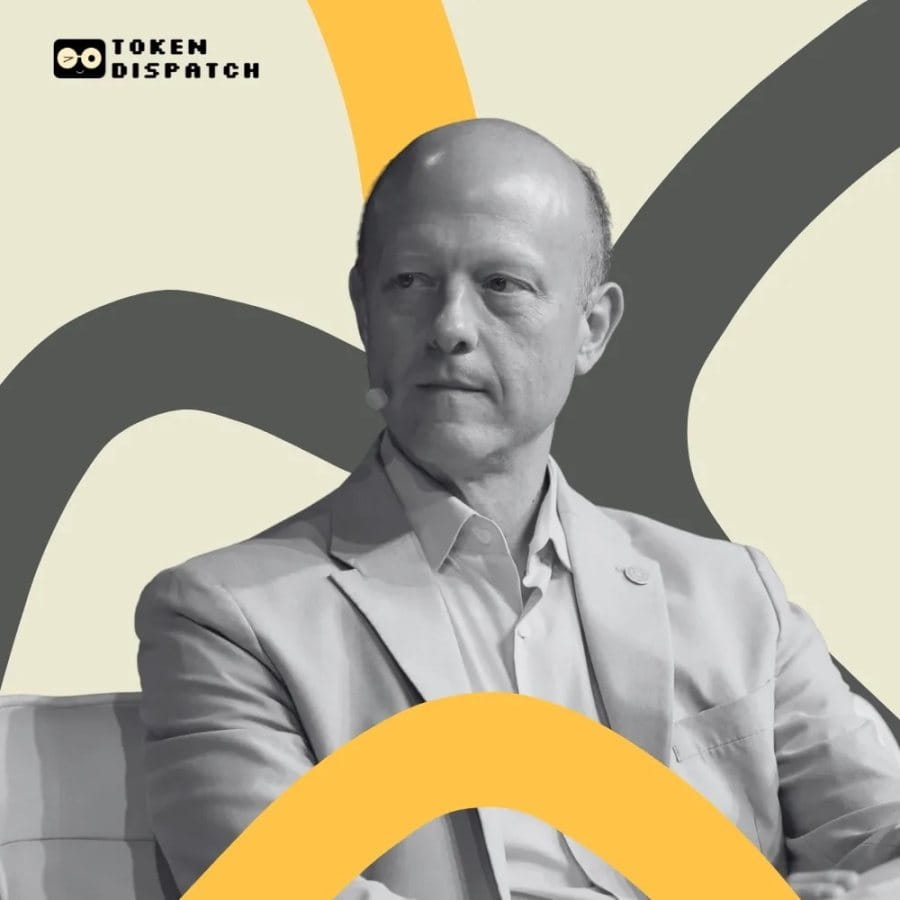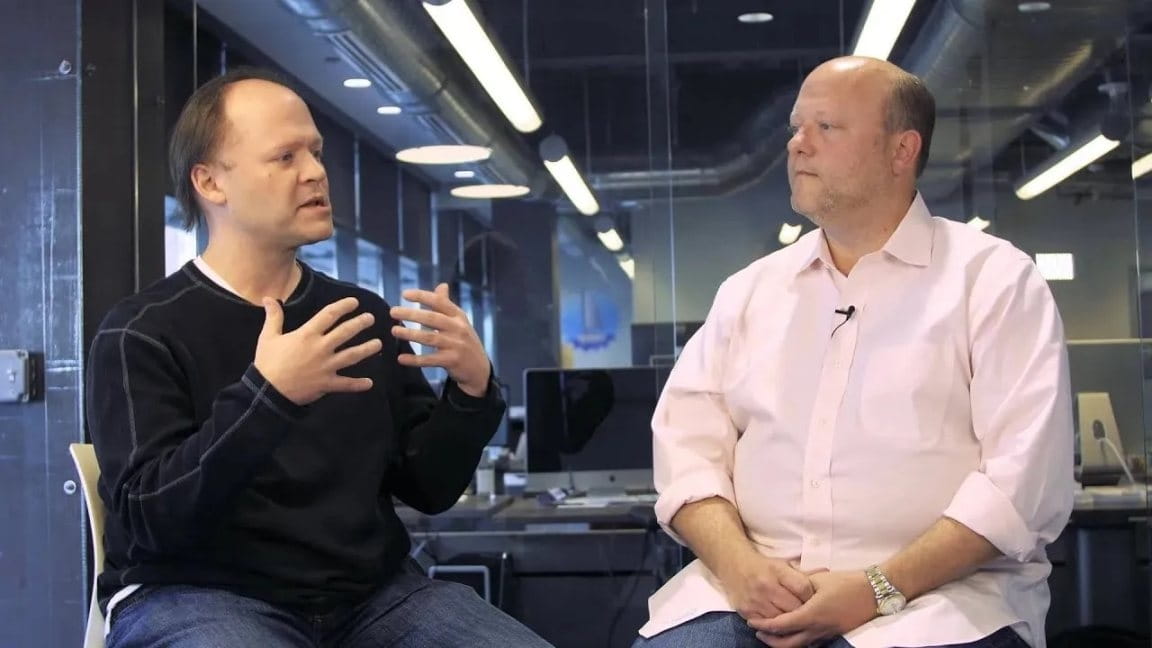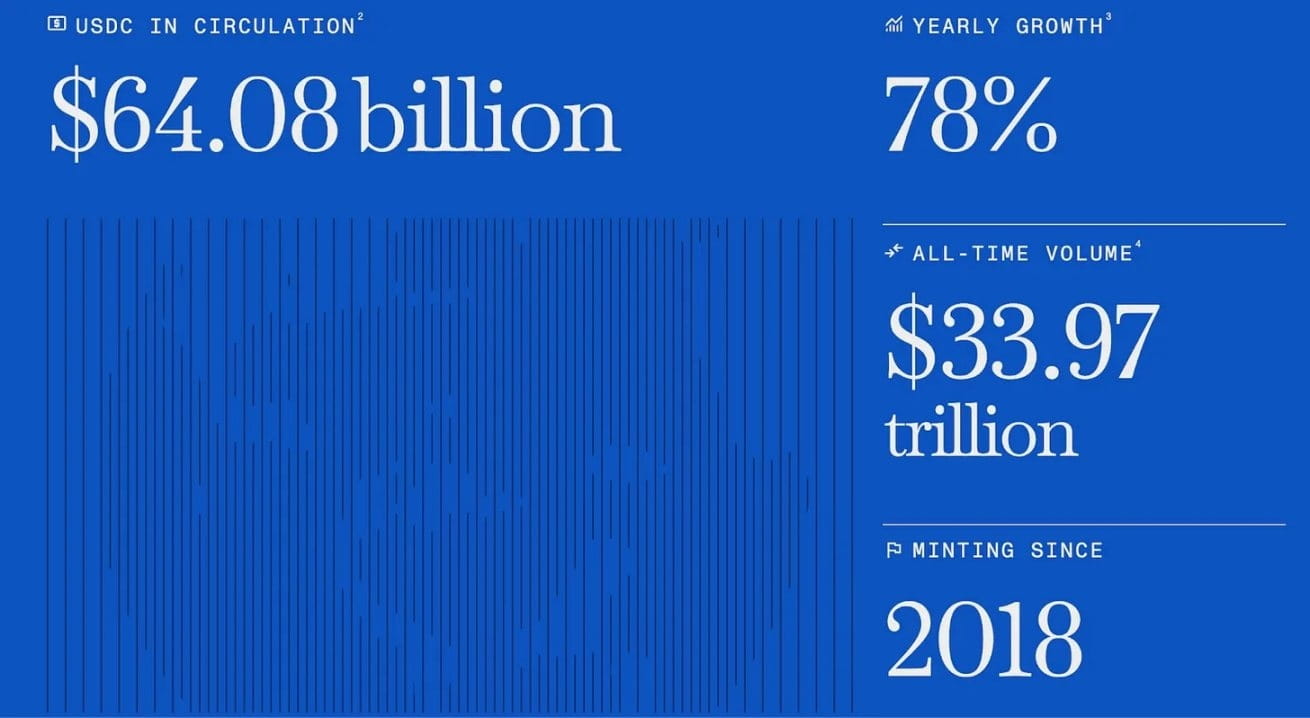Jeremy Allaire made three accurate predictions about the future. The first was in 1990, when most people had never heard of the term 'internet', he recognized the transformative potential of the World Wide Web. This insight led to the creation of ColdFusion software, earning him millions.
The second time was in 2002 when he predicted that anyone would be able to broadcast video content globally without relying on television networks. This vision gave birth to Brightcove, bringing him hundreds of millions in revenue.
The third time was in 2013, when he realized that cryptocurrencies could become the cornerstone of a new financial system. This bet could forever change how money operates.

54-year-old Allaire, who has been building the invisible infrastructure supporting the digital world for thirty years. The USDC stablecoin he created processes trillions of dollars in transactions each year and has become a bridge between traditional finance and the crypto economy.
But for someone whose profession is to see what others do not, Allaire never stopped building the future.
The decade of internet awakening
In 1990, in a dorm room at Macalester College in Minnesota.
Jeremy Allaire's roommate did something nearly incredible. As a staff member of the school's computer services department, he managed to connect the dormitory to the internet. Most people at the time thought 'web' was just a spider's web, while Allaire was about to glimpse the future.
The moment he logged onto the internet for the first time, everything changed.
He said at the time, 'This will change the world', with a tone that was anything but a casual remark from a college student. By the time he graduated in 1993, the internet had become his 'main passion'.
Think about the context of the time: when Allaire first encountered the internet, Netscape had not yet been born, Yahoo had not yet been founded, and the term 'cyberspace' was rarely heard. He saw the next chapter of human civilization ahead of time.
But the foundation for this moment had been laid many years ago.
In 1984, in the living room of the Allaire family in Winona, Minnesota.
13-year-old Jeremy made a small request to his parents: lend him $5,000 for a baseball card trading business. His father Jim was a psychologist, and his mother Barb was a newspaper editor. They understood people and information but were puzzled by their son wanting to use a large sum of money to resell cardboard.
While other kids collected cards for fun, Jeremy took a different route: he saw market inefficiencies, price trends, and opportunities for low buy and high sell.
In the end, he doubled his principal.
In 1993, freshly graduated, he was full of ideas about the internet.
Jeremy faced a dilemma: almost no one understood what he was talking about. The internet? Most businesses had never heard of it. So, he did something reasonable—he started his own company.
'Global Internet Vision' was born, providing consulting for media publishers wanting to understand this mysterious 'web'. But consulting businesses do not change the world.
In 1995, a conversation between Jeremy and his brother J.J. either made them rich or left them broke.
They used J.J.'s $18,000 savings to establish Allaire Corporation, which was almost all their possessions.
The collaboration between the brothers was perfect: J.J. focused on programming technology, while Jeremy concentrated on market needs. It was 1995, before Netscape had monopolized the browser market, and businesses had not yet realized the opportunities the web contained.
The launch of ColdFusion changed everything almost overnight. This software transformed static web pages into interactive applications capable of connecting to databases, managing user accounts, and processing transactions.
Suddenly, companies like MySpace, Target, Toys "R" Us, Lockheed Martin, Boeing, and Intel were able to create dynamic websites without hiring large numbers of programmers. This software became the foundation of e-commerce, the pillar of content management, and the engine driving the development during the internet bubble era.

Starting with a 12-person team in Minnesota, they quickly became profitable.
Realizing that the pace of internet development far exceeded expectations, they partnered with Polaris Ventures in Boston to secure their first meaningful funding: $2.5 million.
When they tried to move to Silicon Valley, the landlord rejected them for being 'too small', so they moved to Boston instead. This rejection may have saved them. Boston's tech scene provided them with resources and talent without the self-centered culture of Silicon Valley.
Annual revenue soared from over $1 million in 1996 to about $120 million in 2000. The company grew to over 700 employees, with offices across North America, Europe, Asia, and Australia. In January 1999, as one of the early success stories proving that the internet was not just a fad, they went public on Nasdaq.
In March 2001, that phone call that tested everything.
Macromedia wanted to acquire Allaire Corporation and offered $360 million.
29-year-old Jeremy was about to become very wealthy.
He agreed. Jeremy and J.J. sold Allaire Corporation to Macromedia, with Jeremy taking the role of CTO at this multimedia giant, while J.J. exited the tech world to pursue other interests.
Video Revolution
In 2002, as CTO of Macromedia, Jeremy walked into a meeting room with an idea that might make the bosses uneasy.
He understood the significance of the data before him: Macromedia's Flash technology, the animation, video, and gaming technology that drove early internet multimedia, was installed on 98% of computers worldwide, and broadband was becoming widespread. Everything was in place, only lacking the right moment.
He proposed Project Vista: a browser-based video capture, upload, and publishing system that anyone could use to become a broadcaster, reaching global audiences.
Imagine YouTube, but years before Google had heard of the concept of a video platform.
Macromedia's executives listened politely and then vetoed the project.
Jeremy watched helplessly as the company he was part of missed the future of the media industry. This company, which brought Flash (a core technology of early internet multimedia) to the world, had just rejected the chance to enter the online video space, thereby missing the opportunity to participate in a critical component of the web.
In February 2003, Jeremy resigned from Macromedia.
Colleagues thought he was crazy. As the CTO of a large tech company, with a decent salary and responsibility for important products, why would he give it all up?
Because he saw the future, while Macromedia had no intention of building it.
Jeremy joined General Catalyst as an entrepreneur-in-residence. For a year, he studied the market, observing various elements coming into place, preparing to challenge the entire television industry. He was just waiting for the right moment.
In 2004, he co-founded Brightcove with others, envisioning 'creating an environment for independent video creators to deliver content directly to consumers, bypassing traditional television networks and channels.'
Compared to the first company, Jeremy's strategy changed: he decided not to bootstrap with borrowed money but to 'get venture capital immediately and grow quickly'. Challenging the television industry required substantial capital and collaboration with major content producers.
The company's mission reflected Jeremy's deepening understanding of the democratizing power of internet technology. Subsequent events proved Jeremy right: content creators who could not afford television network fees suddenly had a global distribution channel; independent filmmakers could reach audiences without begging media tycoons.
In 2012, Brightcove went public, valued at $290 million, with Jeremy holding 7.1% of the shares.
He successfully created a marketplace where thousands of creators could reach global audiences without begging television networks, film companies, or media executives. However, as Brightcove conquered the online video space, he stepped down from the CEO position in 2013 to become chairman.
Why leave when everything is going well? This was already the second time. But Jeremy's eyes were already set on the next corner.
Monetary Revolution
In 2013, Jeremy Allaire stared at his computer screen once again, just like he did 23 years ago in his dormitory in Minnesota.
This time, he was studying something called Bitcoin.
The financial crisis of 2008 made him start questioning everything about traditional banking. Lehman Brothers went bankrupt, Bear Stearns disappeared, and the global financial system was on the verge of collapse, leading Jeremy to wonder if there was a better way.
When he first encountered Bitcoin, that feeling was familiar, almost déjà vu. 'I had the exact same feeling about digital currency, especially Bitcoin,' he told Fortune magazine, 'We are at an early stage of a disruptive technology that has the potential to bring about significant change to the world, just like the internet.'
He envisioned a so-called 'universal flow of funds system, just as the HTTP protocol is the basis for information dissemination on the internet.'
In October 2013, Jeremy co-founded Circle with Sean Neville.
Their vision is to help create the world's first global currency based on the internet and open platforms and standards like Bitcoin.
Accel Partners and other notable venture capitalists immediately joined. Everyone felt this was not a gradual improvement of existing financial services.
Jeremy wanted to create a programmable currency that could settle payments almost instantly at a cost that is only a fraction of traditional wire transfers. They were not looking to improve existing financial services but to create an entirely new category that could operate globally without relying on the slow and costly relationships with intermediary banks that cause delays in international transfers.
But Circle's early attempts at consumer-facing Bitcoin applications and trading platforms did not fare well. It wasn't until Jeremy realized the issue was not with the technology but with volatility that the breakthrough came.
In 2018, the birth of USDC
Through the Centre Consortium in collaboration with Coinbase, Circle launched USD Coin (USDC). This is a stablecoin backed by real dollar reserves, with each USDC token worth exactly 1 dollar.
Now, businesses can enjoy the benefits of cryptocurrency, including instant global transfers, 24/7 availability, and programmable smart contracts, without experiencing the extreme price volatility of Bitcoin.
The regulatory path Jeremy chose was fraught with risk. Unlike many crypto companies operating in the gray area, Circle worked directly with financial regulators to ensure that USDC met the highest standards of transparency and compliance.
This decision sometimes put Circle at a competitive disadvantage: other stablecoin issuers acted faster because they cared less about compliance. But Jeremy was playing a longer game.
By 2025, USDC had become the second-largest stablecoin by market capitalization, with a circulation exceeding $64 billion. Businesses used it for international payments, developers built financial applications on it, and individuals used it for instant cross-border remittances.

Jeremy's success came after overcoming what industry observers called the 'almost impossible distribution challenge'. Unlike Tether, which gained widespread adoption through early partnerships with Asian crypto exchanges, Circle had to build its distribution network from scratch.
Circle's response was to establish a strategic partnership with Coinbase: Circle would pay 50% of its net interest income to Coinbase in exchange for distribution rights within its network.
Is it expensive? Yes. Is it effective? Without a doubt.
USDC has become the primary alternative to Tether in Western markets.
Crisis Test
On March 10, 2023, Dubai. This was supposed to be the weekend of Jeremy's son's 13th birthday.
At 2 AM local time, the phone began to ring.
Silicon Valley Bank faced collapse, and Circle had $3.3 billion in USDC reserves in that bank.
Within hours, USDC lost its peg, dropping to $0.87. Traders panicked, and this stablecoin, which Jeremy had built over five years, seemed to be on the verge of becoming worthless overnight.
Jeremy set up a virtual war room on Google Meet, working with the East Coast team that was eight hours behind. His son's birthday party was forgotten; this was about protecting the funds of millions who trusted Circle.
Plan A: Immediately transfer funds to other banks.
Plan B: Rely on the Federal Deposit Insurance Corporation (FDIC) to cover any losses.
Plan C: Negotiate with companies willing to purchase Circle's assets at Silicon Valley Bank at a discount.
Under the scrutiny of the entire crypto world, Jeremy made a personal commitment: if the deposits in Silicon Valley Bank could not be recovered, Circle would 'make up for the entire funding gap.'
This crisis tested all the cornerstones upon which Jeremy had built his reputation: transparency, accountability, and the determination to do the right thing in difficult times.
Circle published a detailed blog post explaining what had happened and what steps they were taking to protect customer assets.
Three days later, federal regulators provided guarantees for the deposits at Silicon Valley Bank.
USDC regained its peg to the dollar, and the crisis was over.
Jeremy proved that Circle could withstand severe external shocks while maintaining customer trust. His chosen approach of collaboration with regulators rather than confrontation paid off at the most critical moment.
In the development of Circle, Jeremy positioned himself as the most prominent 'advocate for clear regulatory frameworks' in the cryptocurrency space. Many crypto entrepreneurs disagreed, preferring to minimize regulation. But Jeremy testified before Congress, participated in regulatory working groups, and worked with global policymakers to shape the regulatory framework for cryptocurrencies.
In 2024, Circle became the first major global stablecoin issuer to comply with the EU (Crypto Asset Market Regulation).
This strategy worked.
Subsequently, Jeremy decided to take Circle public.
The road to going public was not smooth. They attempted to merge through a SPAC in 2021 but did not receive SEC approval. However, Jeremy persevered.
On July 2025, Circle successfully went public on the New York Stock Exchange.
The IPO documents indicated that it was a company with substantial revenue, clear compliance, and a large business scale. Circle's public debut was valued at over $4.6 billion. Jeremy's decade-long bet on stablecoins yielded remarkable returns.
Today, Circle trades under the stock code CRCL, with a market capitalization exceeding $40 billion. Since the IPO in July, its stock price has surged by over 430%, making it one of the most successful public market debuts in crypto history.
Jeremy believes that stablecoins are approaching their 'iPhone moment': technology becoming practical and easy to use, leading to a moment of mass adoption.
Genius Moment
On July 18, 2025, President Donald Trump signed a bill that vindicated Jeremy Allaire's efforts over the past decade. The (GENIUS Act) became the first comprehensive stablecoin regulatory legislation in the United States. Jeremy's compliance strategy positioned USDC exceptionally well.
(GENIUS Act) did three things that Jeremy had advocated for years: first, it confirmed that stablecoins are not securities, eliminating the regulatory uncertainty that plagued the industry; second, it required stablecoins to be fully backed by safe assets like government bonds, addressing the issue of reserve transparency; third, it brought stablecoin issuers under the same compliance framework as traditional banks.
Jeremy spent years building infrastructure, and now governments around the world are scrambling to adapt to an inevitable world of programmable money.
This prophet, who saw the potential of the internet in 1990, anticipated the popularization of video in 2002, and recognized the cryptocurrency revolution in 2013, had just witnessed his third prediction redefine money itself.
In an industry obsessed with 'acting fast and breaking the mold', he demonstrated that the most transformative changes often come from patience, perseverance, and the wisdom of insight into what others overlook.
Three predictions, three industries that left a profound impact. If his past record is any guide, more significant changes lie ahead.